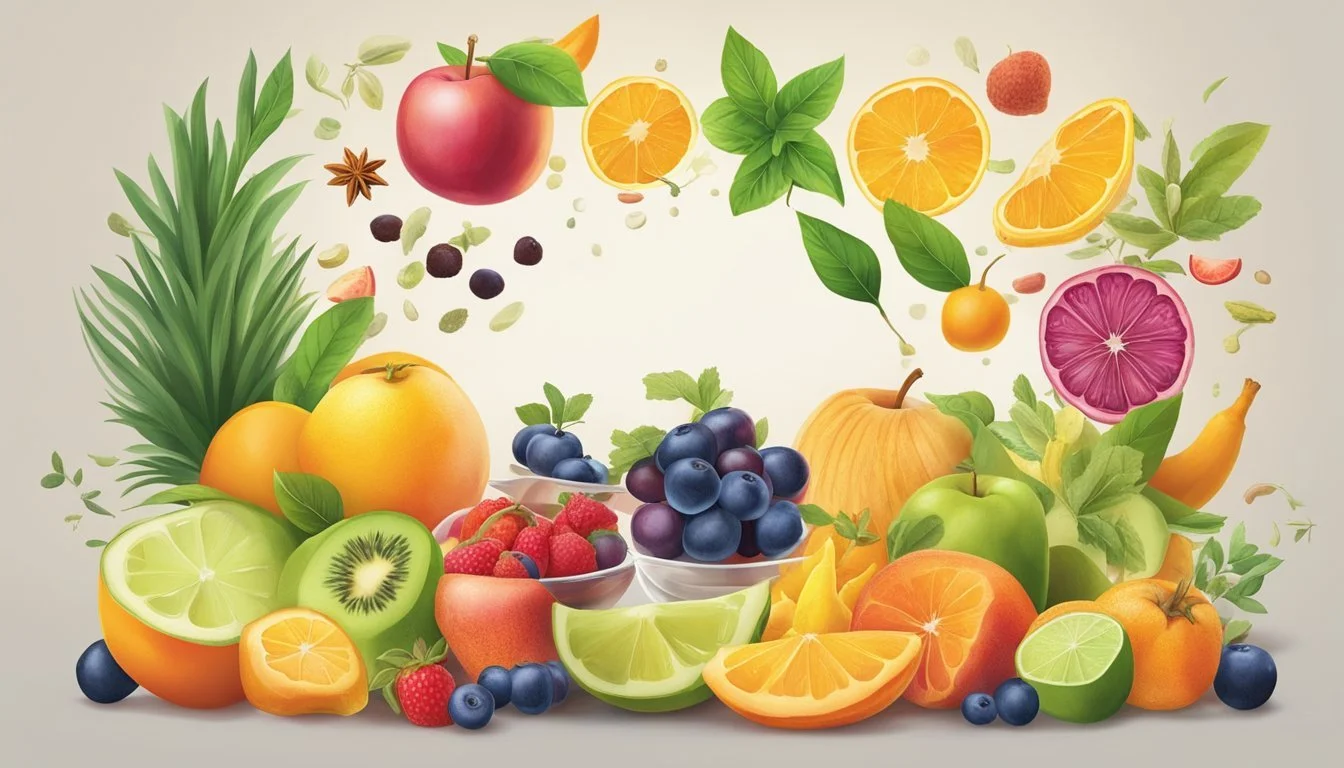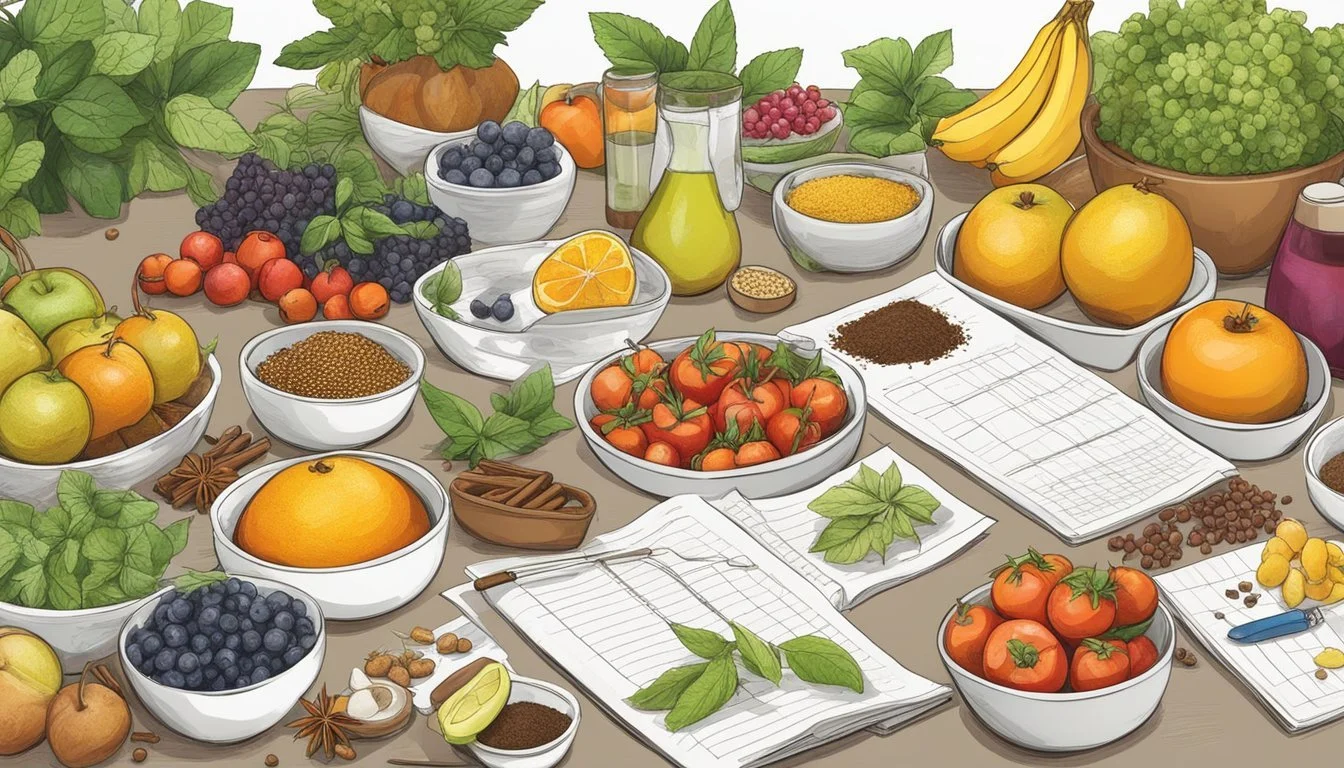The Science of Swicy
Exploring the Intrigue of Sweet and Spicy Pairings
The science behind what makes certain flavors harmonious is a topic of fascination and extensive study. The concept of 'swicy'—a portmanteau of sweet and spicy—is garnering attention in culinary circles for its ability to enhance the dining experience. By combining the heat of spices with the mellowing effect of sweetness, chefs create dishes that elicit a more complex flavor response. This juxtaposition activates different taste receptors simultaneously, offering a dynamic sensory experience. The underlying principle is that sugar can temper the intensity of spice, allowing subtler flavor notes to emerge and making intensely flavored dishes more palatable.
Recent trends have seen 'swicy' flavors rise in popularity, leading to the creation of novel condiments and the reinterpretation of traditional dishes. Hot honey, a blend of the natural sweetness of honey with varying degrees of chili heat, exemplifies this trend and is projected to gain further popularity. Understanding the 'swicy' combination is more than a culinary fad; it is a glimpse into the future of flavor innovation where balance and contrast can create new taste experiences.
The interplay of sweet and spicy has deep roots across various cuisines, yet its resurgence signifies an evolution in contemporary tastes. As palates become more global and adventurous, the embrace of 'swicy' speaks to a broader willingness to experiment with flavor pairings. The science of 'swicy' taps into a fundamental aspect of gastronomy: the pursuit of flavors that are as psychologically rewarding as they are delicious.
The Fundamentals of Taste
Taste perception is a complex sensory experience essential for survival and influenced by various factors, from taste bud interaction to olfactory reception.
Exploring the Five Basic Tastes
Humans experience five basic tastes: sweet, salty, sour, bitter, and umami. These tastes are detected by taste buds located on the tongue, which possess taste receptors that bind to specific compounds in food. Sweet taste, often associated with energy-rich foods, is primarily triggered by sugars. Salty taste comes from the presence of sodium ions and is crucial for fluid balance. Sour taste is a response to acidic substances and can indicate spoilage but also stimulates appetite and digestion. Bitter taste can be a natural warning for toxins, while umami, recognized by its savory quality, is associated with amino acids like glutamate.
Sweet: triggered by sugars; energy indication
Salty: from sodium ions; important for fluid balance
Sour: response to acids; can signify spoilage or stimulate digestion
Bitter: natural toxin warning; varies widely in sensitivity
Umami: savory taste; associated with amino acids
The Role of Olfactory Receptors in Flavor
While taste buds detect the five basic tastes, it is the olfactory receptors located in the nasal passages that contribute to the full perception of flavor. These receptors respond to volatile aromatic compounds in food, which reach the nasal cavity through both the nostrils and the back of the throat during eating. The combination of taste and olfactory sensations provides the overall experience of flavor, where, for example, umami taste combines with specific aromas to enhance the savory appeal of a dish. This multimodal process is fundamental to the science behind why certain flavors combine well, like sweet and spicy, and how chefs create harmonious flavor pairings.
The Chemistry Behind Flavors
In understanding the world of flavor, one must consider the intricate relationship between chemistry and sensory perception. This section explores the complexities of flavor compounds and aromas, the influence of temperature and mouthfeel, and the underlying principles of pairing flavors to enhance the culinary experience.
Flavor Compounds and Aromas
Flavor compounds are the building blocks of taste, created by the interaction of various chemicals in food. Aromas, on the other hand, are volatile compounds that evaporate at room temperature and are detected by the olfactory receptors in the nose. Together, these compounds activate taste receptors and influence the overall perception of flavor. For example, vanilla's sweet and comforting aroma comes from vanillin, while the pungent aroma of garlic is due to allicin.
The Impact of Temperature and Mouthfeel on Flavor
Temperature plays a pivotal role in how flavors are perceived. Volatile compounds responsible for aromas are more active at higher temperatures, enhancing their perception. Conversely, colder temperatures can mute certain flavors. Additionally, mouthfeel—the physical sensations produced by food—also affects flavor perception. Fatty substances, for example, tend to carry flavors better and provide a creamier mouthfeel that can enhance the taste and aroma intensity.
The Science of Flavor Pairing
The science of flavor pairing is rooted in the complementary and contrasting interactions between different flavor compounds. Successful pairings often share common volatile compounds that harmonize on the taste buds, while contrasting flavors can create a balance. For instance, the sharpness of cheese and the sweetness of fruit can combine to offer a complex flavor profile. Such pairings harness the science of flavor to elevate the dining experience.
Ingredient Interactions
Exploring the science of swicy, it's imperative to understand how ingredient interactions can alter and enhance the flavor profile of a dish. This section delves into how textural contrasts and complementary flavor profiles collaborate to create complexity and enjoyment in our culinary experiences.
Textural Contrasts and Complementary Profiles
The juxtaposition of textures in food not only adds variety but also impacts the way flavors are perceived. Crunchy ingredients, such as nuts or certain vegetables, can deliver satisfying contrast to creamy elements like cheese or avocado. The interplay of crisp against smooth elevates the sensory experience and allows each ingredient to contribute its unique taste more effectively.
Examples of Texture Contrasts:
Crunchy nuts in a smooth chocolate bar
Crisp apple slices paired with creamy brie cheese
In swicy flavor pairings, these contrasting textures serve as a stage for the flavors to engage. Sweet elements often mitigate the heat from spicy components. They don't overpower each other but rather work in harmony to create a complex taste.
Balancing Intensity and Acidity
Achieving a balance between spicy intensity and acidic notes is crucial in swicy cuisine. Acids, such as vinegar or citrus, can cut through the spiciness to provide a bright counterpoint that refreshes the palate.
Balance Through Acidity:
A squeeze of lime could tame the heat of chili peppers.
A vinegar-based dressing alleviates the boldness of a spicy slaw.
This balance ensures that the spice level in a meal does not overwhelm the diner and that the acidic components introduce a refreshing zest without stealing the spotlight. The key lies in the thoughtful intermingling of ingredients that complement each other’s intensity levels to achieve a harmonious blend.
Culinary Techniques and Creativity
In the arena of culinary arts, the ability to create well-balanced and innovative dishes hinges on mastering flavor pairings and embracing experimentation. Chefs rely on precise techniques and a splash of creativity to deliver dishes that are both familiar and exciting.
The Art of Flavor Pairings
Selecting the right flavor combinations is a skill akin to a musician composing a symphony. Every ingredient in a recipe has a role, either enhancing or balancing the others. Key to this process is the understanding of complementary flavors, which are combinations that enhance each other's taste profiles. Take, for instance, chocolate and strawberries: the bitterness of cocoa is tempered perfectly by the sweetness of the fruit.
Two common approaches to flavor pairing include:
Complementary Pairing: Combining ingredients that share key flavor compounds, producing a harmonious taste. Example: Rosemary and Grilled Lamb.
Contrast Pairing: Using ingredients that offer a stark contrast to create a balanced dish when combined. Example: Chili Peppers (heat) with Maple Syrup (sweet).
Flavor Profile Examples Sweet Honey, fruits, chocolate Sour Citrus, vinegar, tamarind Salty Sea salt, soy sauce, olives Bitter Cabbage, coffee, dark chocolate Umami Mushrooms, ripe tomatoes, Parmesan cheese
The Role of Experimentation in Cooking
Experimentation paves the way for innovation and discovery in the kitchen. Chefs often use techniques learned through trial and error to find unexpected but harmonious flavor combinations that surprise and delight the palate. This culinary creativity might involve using spices in new ways or marrying traditional ingredients from different cultures to create something entirely new. For example, one might find that the fiery sting of wasabi brings out the subtle sweetness in strawberries, an unlikely pair that challenges conventional flavor profiles.
Moreover, cooking methods play a crucial role in flavor development. The difference between grilling and poaching can change the taste and texture of food, influencing the final pairing. Chefs must consider:
Temperature's effect on taste perception and ingredient compatibility.
The chemical reactions that occur during cooking, such as the Maillard reaction, which can introduce a multitude of new flavors.
The texture's impact on the eating experience, as it can complement or contrast the flavors in a dish.
Application in Dishes
Dishes that masterfully blend sweet and spicy (swicy) flavors create unforgettable culinary experiences. The key lies in striking a balance where neither taste overpowers the other, providing a refreshing burst or a comforting warmth to the palate.
Classic and Innovative Flavor Combinations
In classic dishes, chocolate and chili have always been a bold yet harmonious pairing, providing a kick to the rich, deep tones of chocolate. Utilizing dark chocolate in this combination maximizes the contrast against the heat. For example, a dark chocolate chili infused dessert stands as a testament to this timeless duo.
Coffee and caramel come together in another favored combination, creating a comforting velvety texture and a complex taste profile. Applied in beverages like lattes or in desserts such as affogatos, this pairing elevates the richness of coffee with the sweet smoothness of caramel.
Pizza, often topped with mozzarella, finds a swicy twist with the addition of jalapeños and honey drizzle, blending creamy, tangy, and spicy notes. Similarly, balsamic vinegar, with its sweet and tangy profile, superbly complements the creamy texture of avocado or the sharpness of blue cheese in salads or starters.
Tailoring Flavors to the Palate
Crafting dishes to suit a specific palate requires consideration of the individual's flavor preferences. Those averse to intense heat might enjoy a bowl of chicken marinated with a hint of chili and a generous serving of honey garlic glaze. The honey softens the blow of the chili while the garlic adds a savory note that binds the chicken in a subtly spicy and sweet coat.
Mint and fruit represent a fresh pairing, as seen in salads featuring berries like raspberries with a light mint dressing. Lemon and basil offer a zesty and herbal freshness, ideal in pasta dishes that might include tomatoes and chicken for a light yet flavorsome meal.
To create a dish that targets more adventurous palates, chefs might consider blue cheese with coffee—a daring combination of pungent and bitter elements, a testament to the intricate flavor network leveraged by skilled gastronomers. Adding mushrooms and caramelized onions to the mix can enhance these flavors further, providing a rich umami presence.
Understanding Consumer Preferences
Consumer preferences in taste can be complex, shaped by diverse factors such as individual flavor profiles and psychological influences. By dissecting these layers, one gains better insight into the underpinnings of flavor appeal in culinary experiences.
Taste Profiles and Flavor Preferences
Flavor profiles are intricate mosaics of sensory experiences, where basic tastes like sweetness and bitterness often intertwine with other sensory elements to create a perception of deliciousness.
Sweetness: Often perceived as an indicator of energy-rich foods, sweetness tends to universally appeal to consumers, underlying an evolved preference for caloric sustenance.
Bitterness: While it might signal potentially harmful substances, certain levels of bitterness can complement sweetness, providing depth to a dish's flavor profile.
Understanding these taste profiles requires noting the patterns in consumer reports, which reflect an overarching preference for certain combinations. Abbott's research underlines this, noting that vanilla—a typically sweet flavor—is a global favorite, suggesting an innate preference for mild, sweet profiles across different demographics.
The Psychological Aspects of Flavor Perception
Perception of flavor isn't merely a linear process steered by taste buds; it's also deeply rooted in psychological responses. Spicy foods, (What wine goes well with spicy food?) which can stimulate endorphin release, exemplify how flavor perception involves more than the tongue—it's a holistic sensory event engaging the body’s reward system.
Perception/Intuition: Consumers might not articulate why a flavor appeals to them, but their choices often reveal an intuitive understanding of complementary flavors, such as the union of chocolate and chili pepper, where the heat intensifies the cocoa's richness.
This intersection where preference and perception meet is a dynamic space ripe for exploration. It can inform the culinary scene, as evidenced by the advent of "swicy," where the balance of sweet and spicy taps into an age-old inclination towards contrasting yet harmonious taste experiences.
Exploring Global Flavor Trends
As the culinary landscape evolves, global flavor trends are seeing an innovative blend of regional spices and sweetness, challenging traditional palates and giving rise to the 'swicy' flavor phenomenon.
Regional Flavor Pairings and Influences
Asia-Pacific: In the Asia-Pacific region, the merging of sweet and spicy flavors is not just a trend but a cultural staple. The integration of fiery chili peppers with the sweetness of coconut milk exemplifies a classic flavor pairing where contrast is celebrated. It's a dance of flavors that balance heat with cooling sweetness, often found in Thai and Indonesian cuisines.
South America: Meanwhile, the bold use of spices in South American dishes is complemented by the inclusion of fruity sweetness. From the hot peppers that invigorate Argentinian chimichurri to the tamarind employed in Mexican sauces, regional dishes pair flavors that stimulate all taste buds simultaneously.
Fusion of Traditional and Modern Flavors
Innovation in Fast Casual: Shake Shack’s Innovation endeavors illustrate the fusion of traditional and modern flavors. This trend has infiltrated global fast-casual dining, as seen with salty fries dipped in sweet custard, marrying saltiness and savory notes with an unexpected splash of sweetness.
Patisserie and Chocolate: Patisserie and chocolate are not immune to the swicy wave. Artisans are crafting experiences that juxtapose the sweetness of chocolate with spices like pepper or cardamom, transforming a simple treat into an art form. The intentional pairing of salty and sweet is a dynamic interplay that has become a signature move for modern confectioners.
Advancements in Flavor Science
Recent advancements in flavor science have vastly expanded our understanding of taste and olfactory perception. They encompass breakthroughs in olfactory science and the synthesis of flavor molecules, offering novel insights and applications in the culinary and food production sectors.
Research in Olfactory Science
Research in olfactory science has been pivotal in elucidating how the olfactory system contributes to flavor perception. Scientists have discovered that the olfaction process is not just about scent recognition but also about the detection of volatile compounds. These compounds bind with olfactory receptors, triggering signals to the brain that play a critical role in the science of taste and flavor. Key journals in the field continue to report on studies where advanced imaging and mapping techniques reveal new aspects of olfactory processing.
Notable Findings:
Identification of previously unknown olfactory receptors.
Detailed visualizations of the olfactory pathway and its connection to flavor perception.
Development of Synthetic Flavor Molecules
The development of synthetic flavor molecules is another significant leap in flavor science. Chemists have been able to map out the physical properties of flavor-producing molecules in foods and replicate them in the laboratory. The creation of these molecules allows for the production of flavors that can be less resource-intensive and more consistent than their natural counterparts. As such, these synthesized molecules have become vital to the food industry, ensuring flavor consistency across products and batches.
Applications:
Ingredients in processed foods to replicate natural flavors.
Components in fragrances and food additives to enhance the sensory experience.
Through such advancements, the science of flavor continues to evolve, backed by rigorous examination and innovation in the labs and published in reputable journals. Each new discovery not only unveils the complexities of how humans perceive taste but also how these perceptions can be recreated and manipulated for various purposes.








